Aug 3, 2016 | history, tokens
Proof that numismatics can be used to learn more about history through the economics they represent. Sometimes more telling than coins are exonumia items which have more descriptive value than coins.
Rummaging through a bag of small items recently purchased from an estate sale I found two square tokens. Both are made of aluminum and measured 27mm per side (about 1-inch). Both offer 10-cents off a purchase of personal care products. One will provide a discount on Colgate’s or Palmolive Shave Cream and the other for 10-cents off for the purchase of Colgate’s Ribbon Dental Cream.
-

-
Good for 10c on your next purchase of Colgate’s or Palmolive Shave Cream
-

-
Reverse of 10c token for Colgate’s or Palmolive shaving cream
While these tokens are very interesting, I want to know when they are from? After examining both sides of each token and not finding any indication of a date, it was time to turn to an Internet search engine to figure out when this token could have been made. We start with looking for the company and product information for Colgate-Palmolive-Peet. From this, we found the history of today’s Colgate-Palmolive.
-
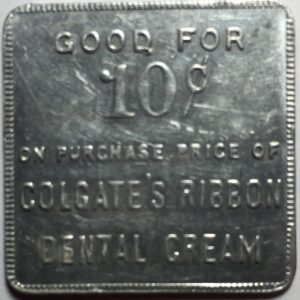
-
Good for 10c on purchase price of Colgate’s Ribbon Dental Cream
-
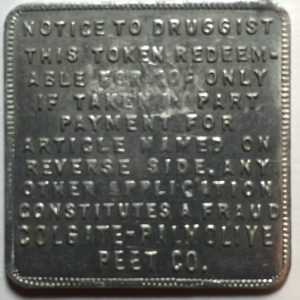
-
Reverse of 10c off purchase of Colgate’s Ribbon Dental Cream token
The company was founded in 1806 by English immigrant soap and candle maker William Colgate. Colgate began by making candles, soap and starch in a factory on Dutch Street in New York City under the name William Colgate & Company. Colgate was the first company to begin selling individual soap cakes in uniform sizes. Following William Colgate’s death in 1857, his son Samuel Colgate reorganized business as Colgate & Company. Samuel did not want to run his father’s business but felt its continued existence with the right thing to do.
NOTICE TO DRUGGIST
THIS TOKEN REDEEM-
ABLE FOR 10¢ ONLY
IF TAKEN IN PART
PAYMENT FOR
ARTICLE NAMED ON
REVERSE SIDE. ANY
OTHER APPLICATION
CONSTITUTES A FRAUD
COLGATE-PALMOLIVE
PEET CO.
Text on tokens
Colgate & Company continued to grow. By 1866 the company introduced the first perfumed soap which was then followed by Cashmere Bouquet. It was the first milled perfumed toilet soap, became a registered trademark in 1872. The next year Colgate introduced their first toothpaste that were sold in jars. The product did not sell well until 1896 when Colgate began selling Colgate Ribbon Dental Cream in collapsable tubes. By 1908 Colgate ended production of their jarred toothpaste.
In 1898, B.J. Johnson developed a formula for soap made of palm and olive oils. The soap was so popular that the company was renamed “Palmolive” to reflect the name of its most popular product (I bet you didn’t know where the name came from). By the turn of the century, Palmolive was the world’s best selling soap.
During this time, the Peet Brothers in Missouri was looking to expand their soap business when the opportunity for them to buy Palmolive from B.J. Johnson. In 1926, the merger of the two companies became Palmolive-Peet Company. Two years later in 1928 the Palmolive-Peet merged with Colgate to form Colgate-Palmolive-Peet. Peet was dropped from the name in 1953 to Colgate-Palmolive Company as it is still known as today.
Let’s start with the obvious. Since Colgate-Palmolive-Peet only existed from 1928 through 1953, it would be logical to assume that the token is from that time period.
To try to narrow down the time-period further, I searched for similar tokens to see if I could find other evidence. While searching, I found a set of similar tokens issued by the Palmolive-Peet Company. This suggests that the company could have continued issuing similar tokens following the 1928 merger.
Trade and tax tokens were popular in the use of trade in the 1920s through the depression. In fact, during the depression, many of these tokens were traded as currency in areas where currency was in short supply. However, many of these tokens stopped being used and circulated in 1942. Since aluminum was part of the scrap metal drives that were used to gather the materials to build war equipment, many of these tokens were turned in to merchants who returned them to the companies for cash. Many were later scrapped.
Without having further information the best I can do is narrow the period it was issued from 1928 through 1941.
As part of my search, I found a few listings on eBay that claimed that these tokens were issued in the 1920s. As we have seen that may not be correct. While being issued in 1929 may be possible, it is more likely that these tokens were issued in the early 1930s.
Of course if you have more information about these tokens please leave comments below.
Jul 16, 2016 | copper, foreign, history, medals, tokens
A few weeks ago I wrote about the potential effects of Brexit on markets should the Brits vote to leave the European Union. When the OUT vote won by a slim margin, there was an instant worldwide reaction. In the subsequent weeks, we have seen world markets react to everything. After an initial fall in markets because of Brexit they have recovered only to be sent back into uncertainty with world events.
The London PM Gold Fix was $1,265.12 before the polls closed on June 23. The next day, the London PM Gold Fix closed at $1,315.50 (4-percent increase). On July 15, the PM Gold Fix closed at $1,327.00, 4.9-percent increase since the vote. Experts are saying gold could continue to climb at the 4-percent rate for the near future.
Silver has been on a slow and steady rise for most of the spring also saw a bump following the Brexit vote. When the London Silver Fix closed at $17.29 on June 23, this was already a $3.29 increase (23.5-percent) from the January 4 first close of 2016 price of $14.00. After the results were announced, London Silver Fix closed at $18.04, a 4.3-percent increase. With the London Silver Fix closing at $20.14 on July 15 (16.48-percent increase), some pundits are suggesting that silver will continue to outperform gold for the near future.
-
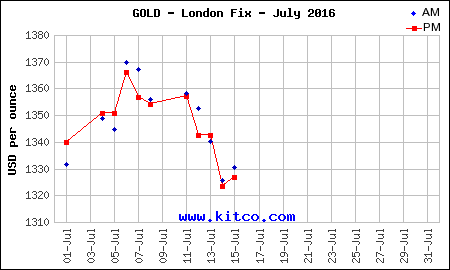
-
Kitco Gold Chart as of 8/15/16
-

-
Kitco Silver Chart as of 8/15/16
When I wrote about Brexit, I also mentioned the “In/Out UK EU Referendum Medallion” produced by Chard(1964), a British metals dealer. After the post, the folks at Chard saw a small bump in sales from collectors the United States from a few of my readers. I was not paid to mention the medal. I just found the information online and thought it was an interesting idea. Shortly before the vote, someone at Chard contacted me and offered to send me some medals.
After a swim across the pond, the medals arrived in my physical mail last weekend. Even though I thought Brexit was a bad idea, the medals are still very cool. Design is the same on both medals. One is copper and the other is Abyssinian Gold, a type of brass made of 90-percent copper and 10-percent zinc that has a gold-like color. Medals are 31mm in diameter and weighs 14 grams making it a nice sized coin for flipping.
-

-
Chard Brexit copper token—IN side
-
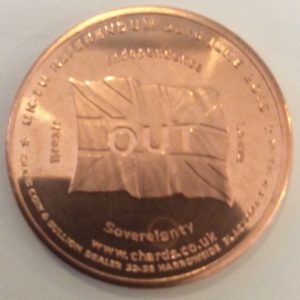
-
Chard Brexit copper token—OUT side
-
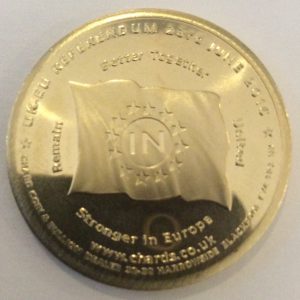
-
Chard Brexit Abyssinian Gold token—IN side
-
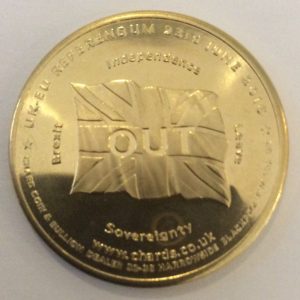
-
Chard Brexit Abyssinian Gold token—OUT side
Chard sent two sets of the medals. I will keep one set and donate the other to my coin club’s annual auction whose proceeds will benefit the Scouts and other numismatic-related education in our region.
It appears that these medals can still be purchased for £2.95 each ($4.33 at the current exchange rate) plus shipping (estimated at £6.00 or $8.80) directly from Chard’s website. I am not making money from this endorsement. I just think it’s a fun collectible!
Static charts courtesy of
Kitco.
Jun 22, 2015 | exonumia, fun, tokens
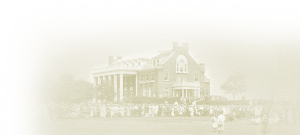 In the 1960s when my parents’ first child was becoming old enough to be enrolled in school, they decided it was time to move out of Brooklyn for the better schools of Long Island. One day, my father found an advertisement in the newspaper for some new homes being built in an old hamlet on Long Island called Inwood. In New York-speak, a hamlet is not an official location but a section of a larger village or township named for jurisdictional purposes. Hamlets are very much like any other area but without its own formal government.
In the 1960s when my parents’ first child was becoming old enough to be enrolled in school, they decided it was time to move out of Brooklyn for the better schools of Long Island. One day, my father found an advertisement in the newspaper for some new homes being built in an old hamlet on Long Island called Inwood. In New York-speak, a hamlet is not an official location but a section of a larger village or township named for jurisdictional purposes. Hamlets are very much like any other area but without its own formal government.
Inwood was one of the Five Towns along with Lawrence, Cedarhurst, Woodmere, and Hewlett. Each had its own character, divisions, points of interest but were together geographically, socially, and and as a larger community. Some of that has changed over the years, but the Five Towns still exists as a central part of life in that area. Although identified as a hamlet, Inwood had its own identity from the rest of the Five Towns. Inwood was more working class than the rest of the Five Towns. It is the home to two schools that were part of the Lawrence-Cedarhurst Public Schools (now just the Lawrence Public Schools), P.S. #4 was the kindergarten and P.S. #2 was the elementary school (then Grades 1-6). There was some industry in an area we called “the factories” and some offices. Not too far was a bowling alley, a few gas stations, and the A&P. A few churches, a synagogue (that no longer exists), the VFW Hall, and the volunteer fire department was all part of daily life.
Many of us have gone in own directions but we cannot forget what made Inwood home for us. One of the ubiquitous parts of Inwood was the golf course. Officially, it is called the Inwood Country Club. Aside from being a private club where many of us were not allowed to enter, it dominated the entire length of Donahue Avenue that was our major route when we walked to school. There were no sidewalks on that side of the street. Trees hung over the shoulder and in the spring and fall you can see and hear the men playing golf.
The last time I visited Inwood, I noticed that the road was better paved and the shoulder that we walked along was no longer available. The fence line came to the edge of the road and a distinct curb was added. The trees were thinner and he shrubbery that dominated the fence when I walked that road was gone. You can now see the golf course from the street.
Although I never went into the Inwood Country Club until I found someone to invite me in the 1980s, its presence looms large in my memory. Our backyard backed up into a swamp-like area owned by the club that would flood when Jamaica Bay overflowed. It was a buffer between the bay and the golf course. The only other landmark in the area that dominated as much as the Inwood Country Club was Kennedy Airport across the bay.
Inwood Country Club was opened in 1901 by Jacob Wertheim because there were few places to play golf on Long Island. Its claim to fame for the golf world is that it was the host to the 1921 PGA Championship that was won by Walter Hagen and the 1923 U.S. Open Championship won by Bobby Jones. The 1923 U.S. Open was Jonse’s first major championship of his professional career. Jones won with what was then considered one of the finest shots on the 18th hole of the playoff that was then called “the shot heard around the world.”
Whenever I find something about Inwood that finds its way for sale I usually try to buy it. Souvenirs from Inwood are not plentiful and numismatic-related souvenirs are even rarer. But when a token honoring the 50th Anniversary of the Inwood Country Club came along, I was a strong bidder. I might have overbid, but I had to make this token part of my collection.
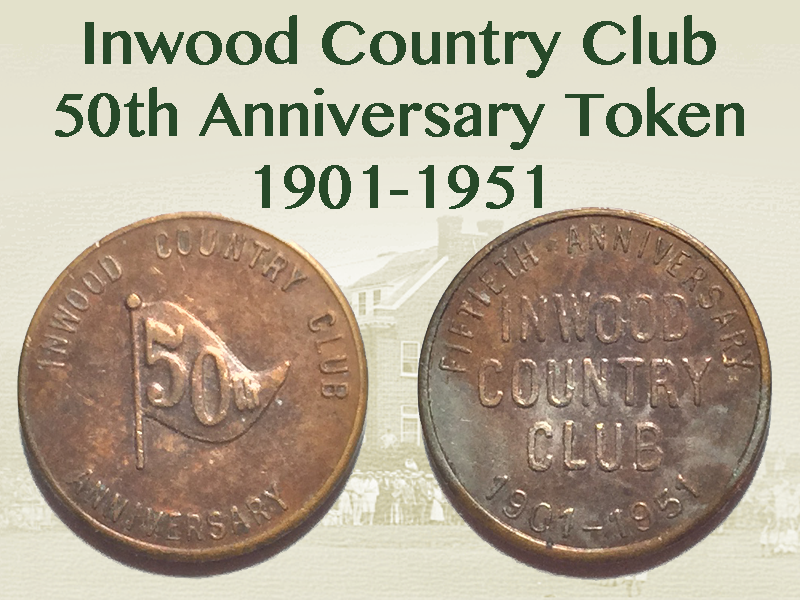
It looks like it is made of a white metal, maybe zinc, coated with copper based on the wearing on the reverse. It is 16.75 mm in diameter making it smaller than a dime, which is 17.9 mm in diameter. But it has survived well for being that small and 64 years old.
This goes to show that you do not have to collect coins to have fun in numismatics!
Inwood Country Club clubhouse image courtesy of the Inwood Country Club.
Mar 30, 2015 | Baltimore, BEP, books, coins, commemorative, Red Book, tokens, US Mint
 As it does three times per year, Whitman rolls into the Baltimore Convention Center for the Whitman Baltimore Expo. This time, rather than the showing being in Halls A and B it was held in E and F. The new location within the building was not as intuitive to find as walking to the end and Whitman did not do as good of a job as they could have in placing their signs. But for general access, which is was off of South Sharp Street, it provided a little better access than off of West Pratt Street, which is a main artery as it passes in front of the Inner Harbor.
As it does three times per year, Whitman rolls into the Baltimore Convention Center for the Whitman Baltimore Expo. This time, rather than the showing being in Halls A and B it was held in E and F. The new location within the building was not as intuitive to find as walking to the end and Whitman did not do as good of a job as they could have in placing their signs. But for general access, which is was off of South Sharp Street, it provided a little better access than off of West Pratt Street, which is a main artery as it passes in front of the Inner Harbor.
Although there were the same number of booths, the space felt smaller. Lights were brighter since these halls seem to have been converted to using LED lighting—the brighter space made the convention center seem less cavernous. Aisles were not as wide and some of the layout changed, but it seemed to have the same number of dealers. Some of the dealers who had larger spaces did downsize and the one vendor of supplies that is not Whitman did not set up at the show. It is not known if they decided not to attend or were not invited to attend. Since Whitman does not carry all books and supplies, it would be nice if they had another supplier.
On thing I have noticed is that since the death of numismatic book dealer John Burns in early 2014 there seems to be fewer numismatic book offerings at some of the east coast shows. Aside from missing his sharp wit, I was always able to find something a little off-beat or out of the ordinary amongst the books he had for sale. While there was a book dealer at this show, the items were more toward what I would consider ordinary. I hope someone steps in with some interesting items.
As I walked the floor and spoke to many of the dealers (late Friday afternoon), they all said that they were doing well. With the area still a bit chilly and no sports to take over the downtown Baltimore area (home opener for the Baltimore Orioles is on Friday, April 10), visitors to downtown Baltimore had plenty of time to visit. For those of us who like access to a major coin show, it is good to hear. If the dealers are doing well then they will keep coming back. If the dealers come back, the show goes on.
Both the U.S. Mint and Bureau of Engraving and Printing had booths at the show. While the U.S. Mint was showing current products, the Bureau of Engraving and Printing had some historical information. Although it is good to see the U.S. Mint at the show, it might be nice to see some historical artifacts. Since most of the U.S. Mint’s collection was given to the Smithsonian Institute, maybe they can be convinced to bring an exhibit to the show. Having the Smithsonian there would be very different than other shows since they have a different type of collection than the American Numismatic Association, for example.
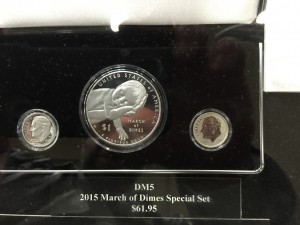
2015 March of Dimes Commemorative Proof set will cost $61.95 when released
Another interesting find was the First Edition of the Red Book Deluxe Edition. While flipping through it at the show, it looks like the Red Book on steroids. There is more information, more detail on pricing, and some other features. A first impression is that it extends the Red Book franchise a bit beyond what they called their Professional Edition. While there is a lot of information, my first impression is that I wish it was more of a cross between the Professional Edition and the Coin World Almanac. Both books have their places, but to combine the pricing and information that is updated yearly (the Coin World Almanac is updated every 10 years) would be a great resource. Hopefully, I will get my hands on one to review.
Finally, no show would be complete with out my one cool find. After walking the floor for a few hours I finally stat at the table of Cunningham Exonumia and had a nice chat with Paul Cunningham while searching for something New York. While I have not given up coins or Maryland Colonial Currency, I seem to be having more fun trying to find tokens and other exonumia from New York City and my hometown of Brooklyn. I have seen Paul at many other shows and have purchased from him. He always has a great selection. For me, I may have exhausted some of his inventory. This time, the pieces he was offering this weekend I already have in my collection.
But it did not stop me from looking. Tokens are very interesting. They are alternatives to money and are more tied to the culture of the community than money. For me, a New York Subway token not only represented a ride on the subway, but it also represents a different part of my life. It makes collecting very person. Although I have a collection of subway tokens I continue to look because you never know what you can find—especially an error.
What I found was a large token with an error. It was sold as the “Large Y” token where the “Y” was supposed to be cutout. Those tokens were used from 1970-1978 and two fare increases starting out at 30-cents in 1970, 35-cents in 1972, then 50-cents in 1975. But what I found is not that token. After examine the token carefully and some others I have, this is an error to the “Solid Brass NYC” Token. Introduced with the 60-cent fare in 1980, the “Y” was part of the raised design and not cutout. The clue as came when examine the obverse (the side that says “New York City Transit Authroity”). Between the “N” and the “C” is the tail of the “Y” but without its top. That tail would not have existed on the earlier tokens because they would have been cut out. Instead, the is a die issue where only the tail of the “Y” on one side was struck.
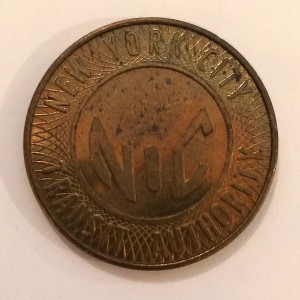
Large Brass “NYC Token” used from 1980-1985 with partial “Y” (obverse)
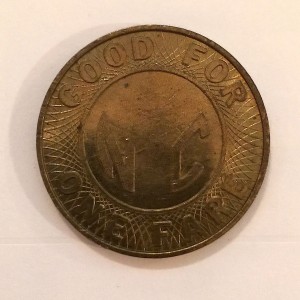
Large Brass “NYC Token” used from 1980-1985 with missing “Y” (reverse)
It might not be the error I expected, but it is an error nonetheless! It also does not make it any less fun or valuable because it will fit nicely in my collection.
If you were not able to make it Baltimore, here are some of the pictures I had taken at the show:
Oct 23, 2014 | coins, commentary, education, medals, tokens
Advancements in all areas of life, whether it is the cars we drive, the entertainment that we like, how we shop, and where we get our news are inevitable. Where the car I drove in college had a the classic Chrysler Slant 6 engine with nothing electronic, I now drive a Chevy pickup with a Vortec V8 with variable timing controlled by a computer that will even start with the push of a button on my key fob.
Rather than complain about these changes, I try to embrace them as progress. After all, I started programming computers by punching cards in the 1970s. Today, the smartphone in my pocket has more computing power than anyone could have imagined while feeding our cards through the reader waiting for output on green bar paper.
Because I like to be progressive with technology and feel that not only have I seen a lot but that I adjusted, I tend to look down on those who cannot. I know that it may be elitist and contemptuous on my part and I should be more understanding, especially now that I bought a car with a Slant 6 as a toy and want another car without all of the electronics.
This self examination was prompted by an article by Q. David Bowers that appeared online on the Coin World website. In the article, Bowers reflects back as to how the hobby has changed since he started writing his column in 1961 and what it is today.
Basically, you used to have to know more about numismatics. You had to know what you were looking at in order to grade coins, know where to find the prices, have the education to know what is fake and what is not, and have a trusted dealer that you can go to to help you with your collection. It was a lot like my Slant 6 in that while the dealer would help, I had to know more about the car in order to keep it running, especially as a poor college student.
Today, Bowers says it succinctly, “No knowledge is necessary!”
While this can help grow the hobby, it makes it just a bit colder. You do not need a dealer when the Internet will do. You do not need the knowledge when companies will entomb a coin in plastic, say it is genuine, and assign a grade so you know what its state of preservation is. If the plastic is not enough, you can even find someone to place a sticker on the plastic to bless that the plastic is good. Then the sticker placer will buy the plastic to churn the market that will essentially drive up the prices.
Although the grading services do provide a service that guarantees the coin’s authenticity, they have also created a fervor over plastic that caused the the despicable behavior during the launch of the Kennedy gold tribute coin.
“If you are typical, quality means nothing. The label on a holder takes care of everything,” writes Bowers. Sadly, he is right because people are no longer collecting coins. They are collecting plastic and stickers while watching online price guides the way day traders watch stock prices. If the coin does not raise in value fast enough, they will buy the next number higher on a plastic package even if the new coins does not look better than the old coin.
Just like listening to the whine of a hybrid takes the charm out of being a car enthusiast, plastic and stickers are taking the charm out of collecting.
To regain the charm Bowers suggests niche or specialty collecting. He says to, “Check out the websites of the Colonial Coin Collectors Club, Early American Coppers, the Liberty Seated Collectors Club and the Numismatic Bibliomania Society, and poke around!”
In addition to Bowers’ suggestions, you may also want to consider Token and Medals Society along with the regional chapters, The Elongated Collectors (TEC), and even the American Vecturist Association. What makes tokens, medals, and even elongated coins very interesting is that you can really personalize a collection. Think about it, how many places have you visited that had a machine where you drop in some money plus a “lowly” Lincoln cent and with a turn of a crank you have the equivalent of a numismatic post card!
A hobby should be fun. So forget the plastic and stickers and go find something and have some fun.
For a little fun, here is a sample of my “Hometown Collection.”
-

-
1984 LIRR Sesquicentennial Bronze Medal
-

-
TBTA Toll Token
-
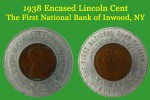
-
1938 Encased Cent from the First National Bank of Inwood (NY)
-

-
A check from the First National Bank of Inwood (NY)
-

-
Medal from the opening of the Brooklyn Bridge in 1883
-

-
1956-D Encased Cent from the Chase Money Museum
-
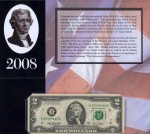
-
2008 $2 Single Note from the New York Fed
Mar 31, 2014 | Baltimore, coins, quarter, shows, tokens
As with every show I attend, I try to find something neat. Something a little different. Something to show you that you can enjoy collecting numismatics that do not have to be plugged into a blue folder, a brown album, or entombed in a plastic case by a grading service. These are great items that have meaning and, for the most part, are affordable.
My find from the Spring 2014 Whitman Baltimore Expo was not discovered while walking the bourse floor. It was an opportunity that came available during the board meeting for the Maryland State Numismatic Association. One of our Board members is Ed Craig who is also president of the Maryland Token and Medals Society. As part of the meeting, Ed showed a limited edition elongated quarter that Maryland TAMS produced to commemorate the 200th Anniversary of the Battle of Baltimore and the writing of the poem “The Defence of Fort McHenry” by Francis Scott Key.
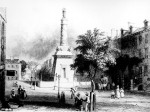
An 1838 lithograph of the Battle Monument in Baltimore
When they rolled the quarter to create the design, it was imprinted on the obverse of the quarter. You can see the Fort McHenry quarter design through the flattened reverse.
I will be wearing the one I purchased this August at the World’s Fair of Money in Chicago.
Maryland TAMS is making a very limited number of these sets available for $10 each. If you cannot pick up your set, they will ask you to pay postage to mail it to you. If you are interested contact Maryland TAMS through their website at mdtams.org.

Cover of the Maryland Token and Medal Society souvenir card.
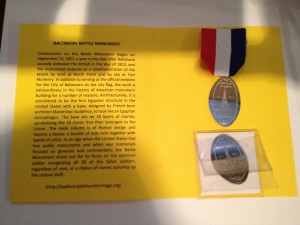
Cover of the Maryland Token and Medal Society souvenir card.
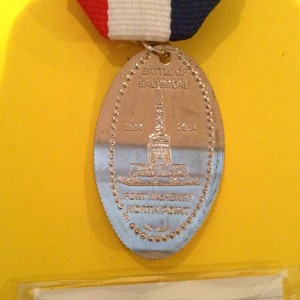
Closeup of the elongated quarter that is part of the Maryland Token and Medal Society souvenir card.
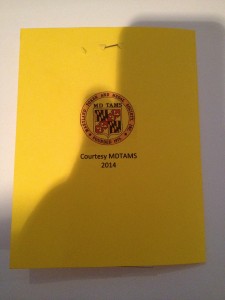
Back cover of the Maryland Token and Medal Society souvenir card.
Click on images to see larger versions.
Feb 24, 2014 | coins, exonumia, shows, tokens
One of the things I noticed over the last few years are the proliferation of local coin shows in Maryland. Part of the reason is an ambitious dealer finding areas to put on shows and do what it takes to make them successful.
The idea is simple: you have inventory that is not making money for you if it is sitting on the shelf. Rent a hall either in a local hotel or an organization’s building, set up the room so that each dealer has a space, provide a couple of chairs per dealer space, rent the dealer space, have a greeter at the door, and security which can be an off-duty police officer from the area. All that is left is the advertising.
Advertising is a key factor because without it, I would not have stumbled over a coin show this past weekend in Frederick, Maryland. After travelling to Frederick from the closer-in Washington suburbs for other business, I remembered reading that there was a coin show in the area. A quick search using my smartphone helped me find the address and my in-vehicle GPS helped me get there.
When I arrived I walked into the room with about a dozen dealers and a few empty tables. I was not concerned with the empty tables but the ones where dealers sat. Since this was a local show, I knew many of the dealers and spoke with those who were not otherwise busy. Since going to this show was a last minute decision, I did not have my want list with me but I looked around anyway.
While looking at some tokens, I heard one gentleman say that he is getting back into collecting after finding the coins he collected as a child. It is a typical story that many of us can relate. When I heard he was lived near where our local coin club met, I approached him, introduced myself as the coin club’s president, and invited him to our next meeting in March.
Finally, I did have a chance to look at some items. For the times I do not bring my lists, I can fall back on searching the tokens for anything from New York City or anything unusual. During this search, I did find two tokens that I thought were worth buying. The first is a token from the Triborough Bridge and Tunnel Authority (TBTA). For the non-New York readers, the TBTA is an affiliate agency of New York City’s Metropolitan Transportation Authority that manages the bridges and tunnels that have at least one end in Brooklyn or Queen plus the Henry Hudson Bridge which crosses the East River between the Bronx and Manhattan.
The token I found were issued for residents of the Rockaways, Queens for crossing the Cross Bay and Marine Park bridges at a reduced price. The Rockaway Peninsula is off southern Long Island in Queens that is very residential and used to be a very popular summer destination with areas of cabins only used during the summer. The TBTA made the tokens available to residents to help lower their commuting costs. Nowadays, the residents use the EZPass electronic toll collecting system for their discount.
The TBTA issued a few different residential tokens in various areas of the city to provide residents with discounts. While I have some of the others, including the one for Staten Island for use on the Verrazano-Narrows Bridge, this is the first one I found for the Rockaways. After all, these tokens were issued to be used by the residents. Most used the tokens they purchased and did not save them.

Obverse of the Triborough Bridge and Tunnel Authority Rockaways resident token.

Reverse of the Triborough Bridge and Tunnel Authority Rockaways resident token.
The other token I found was a souvenir from the Empire State Building. While I have a few tokens from the iconic building, this one not only looks newer but is also holed for use as jewelry. This is one of the better looking medals I have found since it look like it was minimally handled.

Obverse of the holed Empire State Building medal.

Reverse of the Empire State Building medal
One of the ways to make collecting more fun and personal is to collect exonumia that means something. Being from New York, I once used some of these items not thinking that I would be collecting them years later. Subway tokens were ubiquitous in New York life. I used to use TBTA tokens a lot, especially crossing the Verrazano Bridge for a daily commute to Piscataway. Later, when I moved to New Jersey, I had used tokens for the PATH (Port Authority Trans-Hudson) and was excited to find tokens from its predecessor, Hudson Railway.
Coins are still a lot of fun, but I am really having fun looking for various hometown-related tokens and medals. Aside from being a reminder of my past, it is also a look back on the history of my hometown New York, New York, a city so nice they named it twice!
Jan 14, 2014 | coins, fun, shows, silver, tokens
Going to a coin show in another area of the country is an education on seeing how others do the shows and meeting dealers who do not travel to your area. For me, attending the FUN Convention in Orlando was this type of experience. Yes, there were the usual big name, high volume, and high-end dealers present as they are at any show, but there are other dealers whom I have never met before.
Saturday was spent in three parts. When I arrived at the convention center, I went directly to the exhibits area. As a wannabe exhibitor with two (what I think are) good ideas, I wanted to see how others present their ideas. For the most part, I was a little disappointed in the exhibits. Many were mundane and typical. There were only a few exhibits that really stood out.
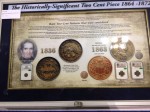
This Historically Significant 2-cent Piece by Tom Ulram of PAN
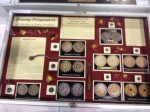
“Penny Potpourri” by Charmy Harker won Best in Class, Show, and People’s Choice
The second part of my day was schmoozing. There is nothing like meeting numismatists of all type on a bourse floor and just talk with them. I spoke with people I know, dealers I did not know until I sat at their table, and with visitors looking at various items wanting more information. I had the most fun at the American Numismatic Association traveling exhibit explaining the history behind the various items of currency that were on display.
Speaking of the ANA traveling exhibit, I was a little disappointed in the presentation of what was exhibited. Aside from not having the currency labeled with information, the case with the errors had just coins placed in the case without description or context. Many of the bland collector exhibits were done better than what the ANA presented.
FUN organizers understand that the idea of having a how is to have fun (pun intended). One exhibit area that I have only seen at FUN is the artists’ area. The artists’ area was in the back of the hall off the center aisle where tables were set in a square that hand artists making jewelry and art from coins. There were a number of artists making modern Hobo Nickels, a bead artist who used coins as part of the beading work, and someone who made large rings with carved coins.
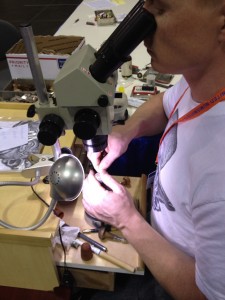
A modern Buffalo Nickel artist carves coins at the FUN Show

The rings from another artists features designs using coins (see top row)
Another fun area was the panning for gold. On the other side of the hall was a large booth set up with troughs that had mud and tiny gold nuggets. It was fun to walk up and watch the kids swirl the pan and find a tiny gold nugget. I do not know how much gold was in that water, but it was a lot of fun giving it a try. No, I did not find a gold nugget!
Of the large shows I have attended, FUN has had the most diverse attendance. There seemed to be more families, women, and minorities than even at the World’s Fair of Money. Another pleasant surprise was the number of women taking the lead with the young numismatists around the bourse floor and many of those YNs being girls. There were also quite a few Hispanic collectors with their YNs buzzing around the floor. Since I do not speak Spanish I could tell they were enjoying themselves just be observing their body language.
Diversity is good in both the hobby and life. No single group has the answers and attracting people with diverse backgrounds and perspectives is good for everyone. I do not know if the organizers of FUN advertise the show in minority communities or in areas that would attract diverse interests, but they should share what they do with the rest of the numismatic community since it is working.
As for my purchases, I was looking for a few silver bullion coins. Of the ones on my personal want list I was able to pick up the 2013 25th Anniversary Canadian Silver Maple Leaf and the 2014 Chinese Panda. I did not find the 2013 all-silver Britannia and I forgot about the 2013 and 2014 Australian Silver Koala. Since I already own the 2013 American Silver Eagle Proof, I should be almost caught up with my silver collection.
In my attempt to find something that I can say “oh… neat,” I did find three items that category. First, to add to my New York City collection is a Type 2 or “Large Y” subway token without the large “Y” punched. This token would have been used from 1970, when the fare was 30-cents, through 1980 for a 50-cents fare. I have seen many mis-punched tokens, but this is the first I have seen without the “Y.”
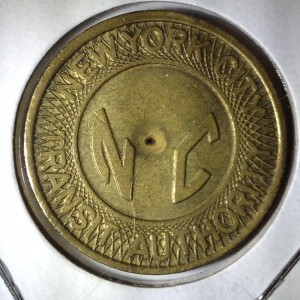
New York City Type 2 Subway Token error. It’s missing the punched out “Y”
My next “oh… neat” item is a Dad’s root beer bottle cap but with a 1953-D Lincoln cent wedged inside the cap. I do not know if this was done by Dad’s or someone else, but the folding of the cap around the coin looks too perfect to have been done manually. Even if it was done by someone as a good luck piece, it was very interesting.

The bottle cap of a Dad’s Root Beer bottle. A 1953-D Lincoln cent is embedded in the reverse!

A 1953-D Lincoln Cent is “trapped” inside this Dad’s Root beer bottle cap
Finally, I found a 1940’s era oil rationing coupon book. Obviously issued during the war, the coupon book limited the holder to up to $25 of home heating oil from the Service Oil Company of Hibbing, Minnesota. Hibbing is in what can be described as northeast Minnesota where it is not exactly warm. As I type this, the Weather Channel is reporting that the temperature in Hibbing a 1F! What makes this coupon book unusual is that it is unused with all the coupons attached from frigid norther Minnesota. It has survived over 60 years in nearly pristine condition. Now that is “oh… neat!”
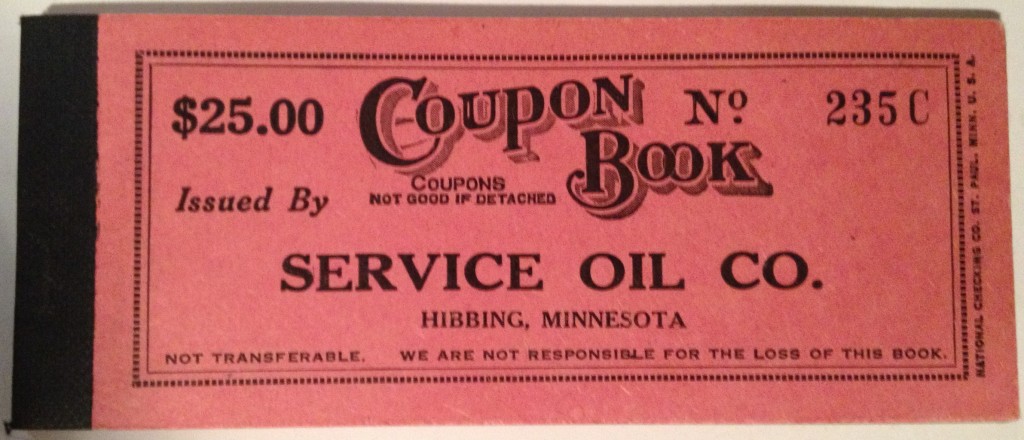
A never used home heating oil rationing coupon book from the World War II era.
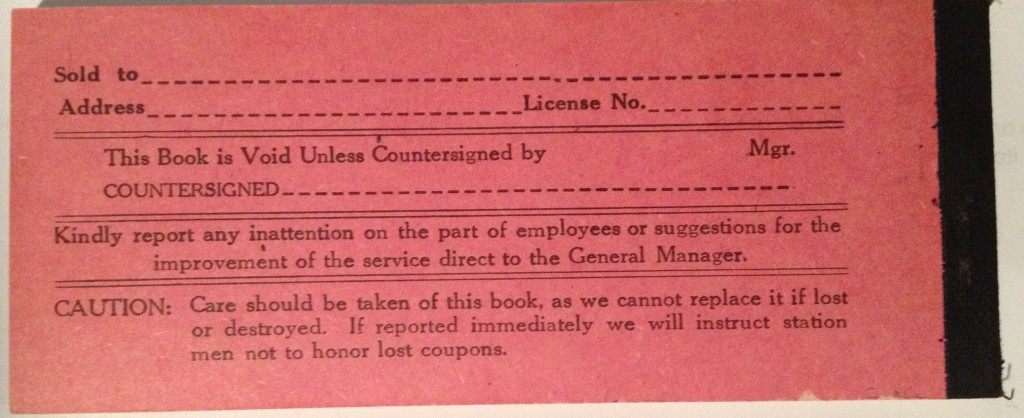
Back cover of an unused home heating oil coupon book. It was printed for but never issued by Service Oil Company of Hibbing, MN
If you have not been to FUN you should try to go. At least take the family. They can go to a theme park while you hit the bourse floor!
Photo Album
Sep 1, 2013 | coins, education, medals, tokens
One of the benefits of living in the Washington, DC area is the access to the great museums. Even better, most of them are free or charge a convenience fee to register for entry times online. A few weeks ago, I was able to take advantage of this when my nephew and nice brought their parents, my brother and sister-in-law, to the area in order to visit a few of the museums in the area.
After a late breakfast, we went to the United States Holocaust Memorial Museum. Aside from its mission to memorialize and teach the lessons of the atrocities during World War II it strives to educate people as to their responsibilities in the face of hatred and genocide while promoting human dignity. The museum is celebrating 20 years having been dedicated on April 22, 1993 and opening to the public on April 26, 1993. You can read more about the history of the museum here.
If you come to visit the Washington, D.C. area, I highly recommend that you allocate at least four hours to go through the museum. If you are like me and like to read everything, view all of the exhibits and displays, and watch all of the videos then you should consider scheduling more time.
What does the Holocaust have to do with numismatics? First, in some of the displays are scrip and coupons used mainly in Jewish ghettos for rationing of goods and services. It shows how an economy attempted to survive in the harshest of circumstances. While some of the scrip are reproductions, it gives the museum goer a sense of what those in the ghetto might have gone through.
Another group that created their own script were the Roma (Gypsies). Although the Roma were Aryan, they were persecuted as being inferior to the Germans. However, when they were rounded up and brought to the concentration camps, the Gypsies created their own order along with the other non-Jewish population as they were segregated in the camps.
There is not a lot of money-related artifacts, especially for the period following the start of World War II, but what is there shows its importance as part of the survival of the persecuted. The power of money was on display the movie Schindler’s List where Jewish artists were forced to create printing plates in order to counterfeit British money. In fact, the movie The Counterfeiters is about the counterfeit operation set up by Nazis to weaken the economies of the enemies.
Before leaving the museum requires a stop in the gift shop. Amongst the books and other items to help you remember your visit are the official medal and some smaller tokens. The medal is made of bronze and is about the size of a United States half-dollar (30 mm). The medal appears to be in a ringed holder that is embedded in a card. Two smaller tokens includes one that reads “What You Do Matters” and one with an image of a candle cut out from the metal with the words “Remember” across the top and “Never Again” on the bottom. Both tokens are 20 mm in diameter.
-

-
Obverse of the US Holocaust Memorial Museum Medal
-

-
Reverse of the US Holocaust Memorial Museum Medal
-

-
“What you do matters” refers to how you react in the face of genocide where ever it occurs matters.
-

-
“Always Remember” token with cutout of a candle.
Collecting coins, tokens, and medals of the places you visit is one way to enhance your collection. To complete the collection from this visit I also purchased three postcards. The postcards, medal, and tokens were placed in a page that holds three 4×6 items with two postcards in one pocket, the medal in its own pocket, and the tokens in the pocket with the single card. The page is in a binder with a note describing when I obtained these items, who I was with, and some other thoughts. Adding the note personalizes the collection and will remind me of the visit many years from now.
Jul 6, 2013 | Canada, coins, exonumia, medals, pocket change, tokens
Amongst my activities for the last month has been cleaning off the top of my desk. While for some this may be an easy project, for me it is a major proposition. One of the reasons is that the way I work can be best classified as “organized chaos.” Organized chaos builds piles of like items until there is no room. Rather than clean up the piles, priority items are reordered and piled on top of items that may not be needed until later. This keeps going until the desktop becomes unorganized as the piles get shifted looking for something that became buried. At some point the organization goes away and all that is left is the chaos. Finally, the day comes when a critical item can no longer be found.
I have had people tell me that the best way to keep my organization under control is to deal with the item right away. For some reason, I get attached to ideas, concepts, and the objects that are associated with them. Everything gets saved until I do something with them or I am faced with the difficult decisions to make it a priority when I finally dig out of the chaos.
But the digging can be fun because at the bottom of the pile, when the top of the desk is finally rediscovered, are the small items that are the most fun. In my case, there are a lot of coins, medals, tokens, and other items that I thought would be cool or nice to resell. Just to have a little fun, I gathered up some of the numismatic trinkets and decided to share it with my readers.

Some of the numismatic items found during my attempt to organize my chaos.
It looks like an eclectic little lot of stuff. I have a million dollar bill (talk about inflation money) sitting on top of a package of shredded currency that says has about $10 of chopped up notes, some Canadian money, and older U.S. coins. Those coins with the little numbered stickers were purchased at my coin club’s auction. There is a lot of five Canadian dimes, a copper 2-cent piece, and a nickel 3-cent coin.
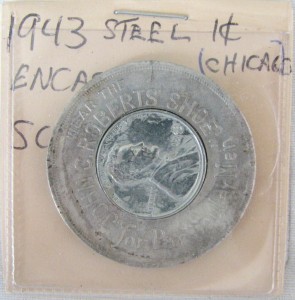
Encased steel cent advertising John C. Roberts Shoes “for the particular man.”
John C. Roberts was one of the founders of the Roberts, Johnson & Rand Shoe Company of St. Louis in 1898 as a wholesaler. The other founders were Jack Johnson, Oscar Johnson, and Edgar E. Rand. They were a competitor to Peters Shoe Company that was founded in 1836 but organized into a formal corporation under Missouri law in 1891 by Henry W. Peters. The Peters Shoe Company was a manufacturer and wholesaler.
Although these two companies were competitors, their policies, ideals. and business standards were so closely aligned that they were drawn together by a mutual respect. The companies merged in 1911 and changed their name to the International Shoe Company. The next year, in 1912, the International Shoe Company purchased Friedman-Shelby Shoe Company, another St. Louis-based shoe manufacturer. In 1921, International Shoe Company was incorporated in Delaware.
International Shoe Company was once the world’s largest manufacturer of shoes with Red Goose shoes being its flagship brand. At one time, International Shoe Company owned Florsheim and Savage Shoes, Canada’s largest shoemaker. In 1966 the company changed its name to Interco and tried to become a conglomerate in apparel, footwear, and retailing. The company’s troubles began as it branched into furniture by buying Ethan Allen and Broyhill Furniture in 1980 as the furniture manufacturing was declining in the United States.
Eventually, Interco filed for Chapter 11 bankruptcy in 1991 and sold off all of its operations except for Broyhill, Lane, Converse (which it bought in 1986), and Florsheim. By 1994, the company sold Converse and Florsheim to exit the shoe business. The company was rebranded as Furniture Brands International 1996 after buying Thomasville Furniture. Now they only manufacture and sell furniture leaving collectors with these encased coins to raise our curiosity.
-
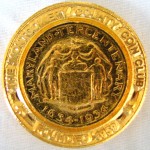
-
Obverse of Montgomery County Coin Club medal with standard logo that was gold plated for the 50th Anniversary.
-
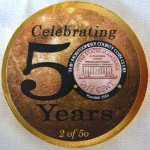
-
Reverse of the Montgomery County Coin Club medal with the special sticker commemorating the club’s 50th anniversary in 2009.
My next interesting find was my “gold” medal commemorating the 50th anniversary of the Montgomery County Coin Club in 2009. As president of the Montgomery County Coin Club, it was my job to help lead a celebration honoring our 50th anniversary. Since I was not a member for as long as others, I leaned heavily on longer tenured members for assistance. I believe the celebration went well.
To commemorate the occasion, we wanted a special medal but we did not want to spend a lot of money. Rather than buy new medals, we dipped into our ample supply of pewter medals and had them gold plated. On the back, I created a “50” logo that was similar to our regular logo that uses the reverse of the Maryland Tercentenary half-dollar but uses the reverse of the Lincoln Memorial cent that was released in 1959. That logo was added to a sticker and numbered. The club as #1 as a souvenir. Since I was the president, I was able to get #2. I just wish I made the background of that sticker a bit lighter.

Miscellaneous Items with Canadian dollar, dimes, a TBTA token, and Keith Hernandez souvenir “coin.”
The TBTA token is interesting because it is smaller than the ones I used to use because it is for other tolls than the East River bridges. This token was primarily used on the Henry Hudson and the Marine Parkway (now Marine Parkway-Gil Hodges Memorial) Bridges where the tolls were cheaper. The larger tokens were used on the Triborough Bridge, Verrazono-Narrows Bridge, the Queens Midtown Tunnel, and other nearby crossings.
Tokens are no longer accepted at the TBTA crossing and they stopped issuing special Staten Island resident tokens for the Verrazano Bridge in 1998 with the introduction of EZ-Pass. I should try to find a Staten Island resident token for my collection.
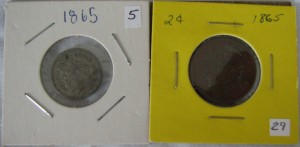
An 1865 3-cent nickel and an 1865 2-cent coin for my 2-, 3-, and 5-cent one-pager
There is more but if I do not stop now I am not going to be able to finish my cleaning!



















































